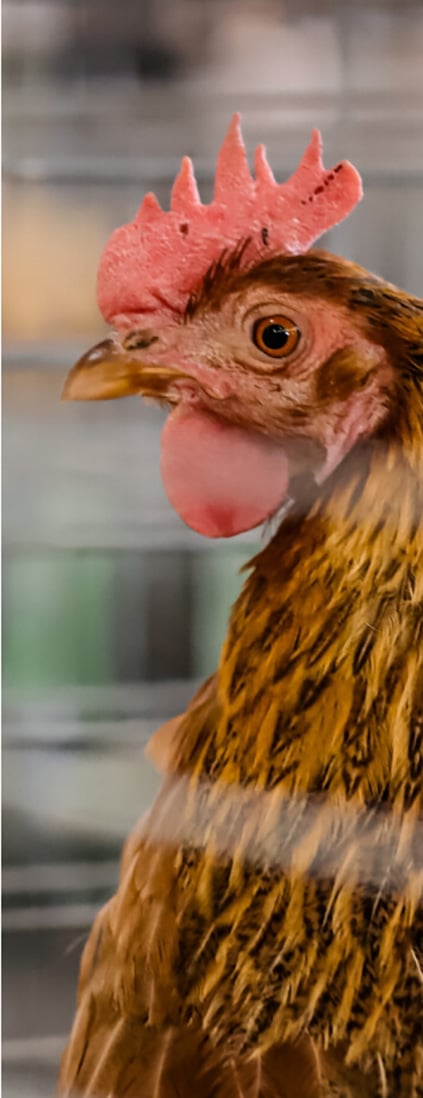Watching your dog age and slow down is one of the hardest parts of being a pet owner. While some changes are subtle, others may indicate their body is preparing for the final stages of life. Recognizing these signs can help you ensure your dog’s last days are as comfortable and peaceful as possible.
As a team dedicated to end-of-life care for pets in Portland, OR since 2009, we’ve seen firsthand how difficult these moments are for families. We hope sharing these common signs and care tips can provide guidance during this emotional time.
Signs Your Dog May Be Nearing the End of Life
1. Stopped Eating and Drinking Entirely
When a dog refuses food or water entirely, it often signals that their body is shutting down. Small sips of water or ice chips can help keep them comfortable and may make you feel better but remember that this will not sustain their daily requirements, especially if they are already sick., And if they refuse even tiny amounts, it’s time to consult your vet about end-of-life care.
2. Difficulty Breathing
Labored breathing, long pauses between breaths, or open-mouth breathing may indicate your dog is struggling. Keep their space calm and quiet to reduce stress and help them relax and most importantly know that this is an emergency situation that requires immediate attention.
3. Extreme Weakness or Collapse
When a dog can’t stand, walk, or even lift their head without help, it’s a strong sign their energy is fading. They might sleep more, avoid movement, and seem uninterested in anything—even their favorite treats or toys.
Create a cozy resting area with soft bedding and keep essentials like food and water close by while you seek immediate medical care.
4. Severe Pain or Discomfort
If your dog cries out when touched, is restless, or avoids movement altogether, they may be in pain. Sometimes, their behavior changes too—they might snap or growl even if they’ve always been gentle.
Your vet can help with pain relief options to keep them as comfortable as possible. Don’t wait—managing pain is one of the most loving things you can do for them.
5. No Response to Treatments
When medications or therapies no longer work, and their condition worsens despite your efforts, it’s a sign their body is no longer able to heal.
Discuss with your vet whether continuing treatments is helping or if it’s time to focus on making their final days peaceful.
6. More Bad Days Than Good Ones
If you’ve started noticing more bad days than good, this is an important sign that their quality of life is significantly diminished. They might seem distant, sleep most of the time, or show a disinterest in things they once loved.
Track their daily quality of life. It’s never an easy decision, but this can help you recognize when it’s time to consider humane options to ease their passing.
7. Loss of Bladder and Bowel Control
When dogs lose control of their bodily functions despite having always been house-trained, it often indicates declining health. They might seem confused or distressed about these accidents, or may not even notice them happening. Dogs normally abhor messes in their resting areas and inside their home.
Keep their area clean and comfortable not only for sanitary reasons but also to retain your dog’s sense of dignity.
8. Severe Mental Confusion
Disorientation, pacing, or staring blankly at walls can signal cognitive decline. Keep their environment consistent and familiar to minimize confusion.
9. Complete Social Withdrawal
If your dog isolates themselves and avoids interaction with family, this can be a sign they’re preparing for the end. Respect their need for space while staying nearby to observe them and provide for their basic needs as well as comfort.
10. Dramatic Weight Loss Despite Eating
Sudden, significant weight loss even when they’re still eating normally can indicate serious underlying issues. If you can visibly or palpably notice muscle loss, their body may be failing to process nutrients properly.
Work with your vet to ensure they’re getting proper nutrition, but understand this may be part of the natural end-of-life process.
Seeing these signs in your dog is heartbreaking, but it may be an opportunity to recognize and give them the care and comfort they need in their final days. Trust your instincts—sometimes subtle changes are only noticeable to the family since you spend the most time with your pet..
Caring for Your Dog in Their Final Days
Knowing your dog is nearing the end is heartbreaking, but it’s also an opportunity to show them extra love and care.
- Create a Calm Space: Set up a quiet, cozy area with their favorite bed or blanket.
- Spoil Them: Treat them to their favorite snacks (if safe) or meals they love.
- Spend Time Together: Sit with them, pet them, and talk to them. Your presence means everything.
- Seek Support: Reach out to friends, family, or pet loss groups to help process your emotions.
When to Seek Veterinary Care
If you notice any of these urgent signs, contact your vet immediately:
- Difficulty breathing or persistent coughing
- Sudden collapse or weakness
- Frequent vomiting or diarrhea, especially with blood
- Straining or inability to urinate Seizures lasting over five minutes or happening in quick succession
- Signs of pain that are unresponsive to medication
End-of-Life Care Options
When the time comes, there are several options to consider:
Hospice Care at Home: Providing comfort and support until a natural passing or euthansia.
In-Home Euthanasia: Allowing your dog to pass peacefully in familiar surroundings.
Clinic care and/or euthanasia: comfort care and euthanasia at your pet’s veterinary clinic
Emergency clinic: Usually for after-hours and/or urgent care, including euthanasia
Pet cremation: At Compassionate Care, we advocate for environmentally friendly options like aquamation, a gentle water-based pet cremation process that offers a respectful alternative to traditional flame-based cremation.
A Final Act of Love
Recognizing these signs and making end-of-life decisions for your dog is never easy, but it’s an act of love.
You don’t have to face this alone. Your vet and local support groups can help guide you through this process. Trust your instincts, and remember: your love and care have always been what mattered most to your dog.
















